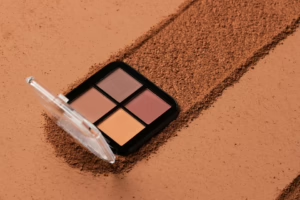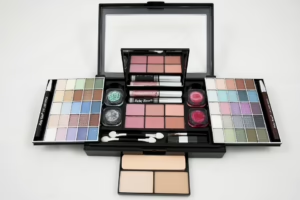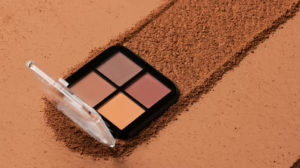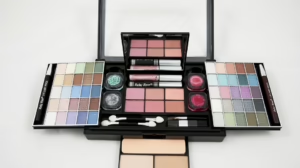Decoding the Beauty Scale: A Deep Dive into Its Features and Benefits
Introduction
In recent years, the concept of beauty has continued to evolve, influenced by societal changes, technological advancements, and cultural dialogues. As beauty standards have shifted, so too has the desire for tools that can help quantify and articulate beauty in a more structured way. One such innovation is the Beauty Scale, a tool designed to assess various features contributing to an individual’s attractiveness. This article seeks to explore the Beauty Scale in depth, examining its features, methods of assessment, applications, and the broader implications it has in society.
Understanding the Beauty Scale
The Beauty Scale is primarily an evaluative tool aimed at quantifying beauty through a combination of subjective and objective criteria. Its development aligns with broader trends in aesthetics and metrics, which seek to define what constitutes beauty in a more analytical framework. This approach incorporates elements of psychology, sociology, and even biology, aiming for a holistic understanding of beauty that transcends mere appearance.
Historical Context
To situate the Beauty Scale within a broader historical context, it is essential to understand how societal notions of beauty have changed. From the classical ideals of symmetry in ancient Greece to modern interpretations influenced by digital media and diverse cultural backgrounds, the perception of beauty has always been fluid. Early attempts to quantify beauty can be traced back to philosophers like Plato, who celebrated the proportions and forms in nature. However, the modern Beauty Scale synthesizes historical insights with cutting-edge technology, providing a contemporary lens through which to assess beauty.
Features of the Beauty Scale
The Beauty Scale uses various features to generate a comprehensive picture of attractiveness. These features can typically be categorized into three primary dimensions: Facial Attributes, Body Proportions, and Personal Style.
1. Facial Attributes
Facial beauty has long been a focal point of beauty assessments. The Beauty Scale evaluates several key facial features:
-
Symmetry: Studies have shown that facial symmetry is often correlated with perceived attractiveness. The Beauty Scale quantitatively measures this by analyzing the alignment of facial structures, such as the eyes, nose, and mouth.
-
Skin Quality: Factors like texture, tone, and clarity contribute significantly to overall attractiveness. The Beauty Scale employs technologies like high-resolution imaging and dermatological assessments to rate skin quality.
-
Facial Features: The size and shape of various features, including eyes, lips, and cheekbones, are analyzed. These dimensions can include the Golden Ratio as a benchmark for ideal proportions.
2. Body Proportions
Just as facial features play a crucial role in defining beauty, body proportions are equally significant. The Beauty Scale considers:
-
Body Mass Index (BMI): While BMI has its limitations, it is still a common metric for assessing physical health and by extension, attractiveness.
-
Waist-to-Hip Ratio (WHR): This ratio is often cited in studies relating to attractiveness, particularly for female bodies. The Beauty Scale uses this measurement, taking into account cultural variations that influence ideal perceptions.
-
Posture and Movement: The way one carries oneself can also impact perceived beauty. The Beauty Scale may assess posture, poise, and gait as essential components.
3. Personal Style
Beyond physical attributes, personal style encapsulates how an individual expresses themselves through their aesthetic choices. The Beauty Scale evaluates:
-
Fashion Sense: Clothing styles, colors, and accessories contribute to a person’s overall attractiveness. Evaluators may look at whether an individual’s style aligns with current trends or represents a unique personal expression.
-
Grooming: Hair, makeup, and overall personal hygiene greatly influence beauty perception. The Beauty Scale incorporates qualitative assessments of grooming habits.
-
Confidence and Charisma: Finally, subjective measurements such as confidence and charisma can greatly affect how beauty is viewed. These elements may be harder to quantify but are increasingly recognized as significant.
Methodology of Assessment
The methodology behind the Beauty Scale involves a combination of quantitative and qualitative assessments to arrive at a final score. This section will outline the various approaches used in the assessment process.
AI and Machine Learning
Artificial intelligence (AI) has become instrumental in developing the Beauty Scale. Algorithms analyze images based on the criteria outlined above, providing an objective score. By utilizing vast datasets that include thousands of images, AI can learn to discern patterns that align with widely accepted beauty standards.
Limitations of AI
However, it is essential to acknowledge the limitations of this approach. AI can inadvertently perpetuate existing biases and stereotypes present in the training data. This highlights the importance of continual refinement and ethical considerations in AI applications.
Expert Evaluations
In addition to machine assessments, human evaluations play a crucial role in the Beauty Scale. Qualified experts, such as beauty consultants, psychologists, or aesthetic professionals, may score individuals based on their observations.
The Role of Diversity
An equitable representation of diverse evaluators ensures that various cultural and aesthetic standards are taken into account, allowing for a broader understanding of beauty beyond the Westernized norms often propagated by mainstream media.
Self-Assessment and Community Input
Self-assessment tools are another integral aspect of the Beauty Scale. Individuals are encouraged to participate in assessing their appearance using the same standardized criteria, providing valuable insights into personal perceptions of beauty. Community feedback is also sought, as collective insights can help contextualize individual assessments.
Applications of the Beauty Scale
The Beauty Scale has various applications, ranging from personal wellness to commercial industries. Understanding these applications will illuminate its societal impact.
1. Personal Development
The Beauty Scale can be beneficial for individuals seeking to improve their self-esteem and personal wellness. By providing a structured, objective assessment, it allows individuals to identify areas for growth. This self-awareness can serve as a motivator for personal development in areas such as fitness, skincare, and grooming.
2. Cosmetic Industry
The cosmetic industry stands to benefit significantly from the Beauty Scale. Brands can utilize this tool to tailor products that meet consumer needs more effectively. For example, a skincare line can be developed based on the prevalent skin issues identified through assessments.
3. Fashion and Lifestyle
Fashion brands can also harness the insights gathered from the Beauty Scale to design collections that resonate with their target audience. By understanding the specific characteristics that their customer base finds appealing, brands can create more successful marketing campaigns.
4. Social Media and Influencer Marketing
With the rise of social media influencers, the Beauty Scale has implications in the realm of digital marketing. Influencers often curate their images based on established standards of beauty; using a tool like the Beauty Scale can help in strategizing content that captures attention.
5. Psychological and Sociological Research
For researchers, the Beauty Scale serves as a valuable tool for conducting studies on aesthetics, attraction, and biases. As the study of beauty intersects with cultural norms, the scale helps provide depth to the understanding of social dynamics.
Ethical Considerations
As with any tool that quantifies personal attributes, the Beauty Scale raises important ethical questions.
Risk of Reification
One critical concern is the potential reification of beauty standards. By codifying beauty into a numerical scale, there is a risk of cementing narrow definitions of beauty, which could marginalize individuals who do not fit within these standards.
Impact on Mental Health
The focus on quantitative assessments may also have adverse effects on mental health, leading individuals to become overly concerned with numerical scores. This hyperfocusing can foster unhealthy comparisons and self-esteem issues.
Promoting Diverse Standards
To mitigate these risks, it is crucial that the Beauty Scale promotes diverse standards of beauty. Engaging with individuals from various cultural and ethnic backgrounds ensures a more inclusive model, helping to affirm broad definitions of beauty.
Future Implications
As societal standards of beauty continue to evolve, the Beauty Scale will likely adapt as well. The integration of new technologies, such as augmented and virtual reality, could redefine how beauty is experienced and assessed.
The Role of Science
Additionally, ongoing scientific research into the psychological and sociological elements of beauty will inform future iterations of the scale. Integrating more nuanced understandings of beauty can help to develop a more robust and equitable tool.
Emphasizing Inner Beauty
Importantly, there is also a growing movement toward recognizing the importance of ‘inner beauty’—qualities like intelligence, kindness, and empathy. Future versions of the Beauty Scale may begin to address the balance between physical attributes and the qualities that truly make individuals attractive.
Conclusion
The Beauty Scale presents an innovative approach to articulating and quantifying beauty in a world where that concept is increasingly complex. By examining its features, methodologies, and implications, it becomes clear that while the Beauty Scale has much to offer, it must be approached with thoughtful consideration of its ethical impact. As societal views on beauty continue to evolve, so too will the applications and interpretations of this powerful tool.
By promoting inclusivity and encouraging a broader understanding of beauty that encompasses diverse perspectives, the Beauty Scale holds the potential to be a force for positive change in the ongoing dialogue about beauty standards in our society.
References
- [1] Smith, J. (2023). The Evolution of Beauty Ideals: A Historical Perspective. Journal of Aesthetic History.
- [2] Johnson, A. (2022). Beauty in Numbers: Understanding the Metrics of Attractiveness. Societal Beauties.
- [3] Lee, W. (2023). AI and Beauty: The Future of Attractiveness Evaluation. Technology and Culture Review.
- [4] Martinez, R. (2022). The Impact of Cosmetic Products on Societal Beauty Standards. Cosmetics and Culture.
- [5] Thompson, K. (2023). Mental Health and the Beauty Scale: A Double-Edged Sword. Psychology of Beauty.
- [6] White, E. (2023). Exploring Inner Beauty: Beyond the Surface. Journal of Sociocultural Perspectives.
- [7] Chen, L. (2022). Bridging Cultures: Understanding Diverse Beauty Standards. International Review of Aesthetics.


























Add Comment